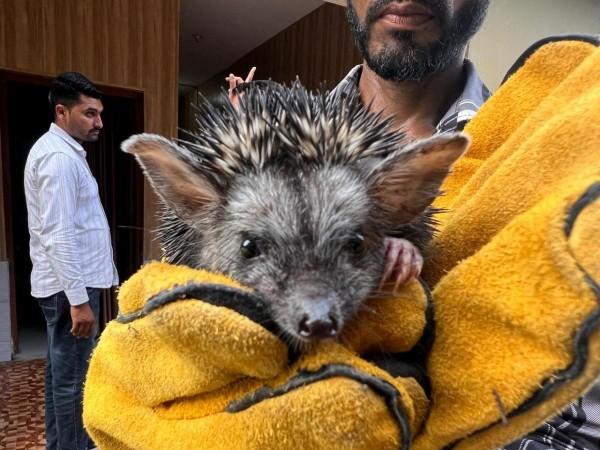
After several critically endangered species were sighted in the twin border districts of Poonch and Rajouri, the Jammu and Kashmir government on Wednesday urged officers of the Wildlife Department to undertake innovative conservation measures to protect these rare species, which have recently been spotted in the Pir Panjal region.
Minister for Forest, Ecology, and Environment, Javed Ahmed Rana, issued these directives during his visit to the Pir Panjal region, where he discussed various conservation measures with wildlife department officials.
Indian Pangolin rescued near LoC
An Indian pangolin, a Schedule I critically endangered species, was rescued from a forested area in Sunderbani, near the Line of Control (LoC), by the Indian Army and Wildlife Department on January 11, 2025. The animal was safely transported to the Wildlife Department headquarters in Rajouri.
Following the rescue, Amit Sharma, Wildlife Warden of the Rajouri-Poonch Range, stated that this was the first recorded sighting of an Indian Pangolin in the Rajouri and Poonch Wildlife Division.
"This is the first time we have found a live Indian Pangolin here," he said.

The Indian Pangolin is categorized as critically endangered in the International Union for Conservation of Nature (IUCN) Red List. While its exact population remains unknown, it is believed to be very small. Due to the high demand for pangolin skin in the illegal wildlife trade, these animals are frequently poached and killed by smugglers.
Discovery of Indian Long-eared Hedgehog
Earlier, on March 14, 2024, the first-ever authentic record of the Indian Long-eared Hedgehog in Jammu and Kashmir was reported from the Nowshera area of the Rajouri-Poonch Wildlife Division.
A team led by Amit Sharma, Wildlife Warden Rajouri-Poonch, captured the animal in the Nowshera belt, and its identity was confirmed by Dr. Shyamkant S. Talmale, Scientist C, Zoological Survey of India.

To further authenticate the discovery, a DNA analysis and morphometric study will be conducted by Dr. Vineeta Sharma, Assistant Professor at Central University, for which samples have already been collected.
Minister Javed Ahmed Rana emphasized that these recent findings are significant for wildlife conservation and called for immediate steps to protect these species.
"We need to implement conservation measures in areas where biodiversity supports rare and endangered species such as Brandt's Hedgehog, Pangolin, Otters, and others," the minister stated.
He directed officers to evaluate activities that threaten biodiversity and research potential solutions that balance environmental, economic, and social concerns. He further stressed that environmental conservation has become a global priority due to climate change and increasing pollution.
"To restore environmental balance, we must adopt a more sensitive approach toward nature and wildlife conservation. Each species plays a crucial role in the ecosystem. If we want to protect them, we need to strike a fine balance between human development and wildlife conservation," he added.
Wildlife Population Survey and Local Community Involvement
Rana highlighted the importance of coexistence among various life forms to maintain ecological balance. He called for status surveys, research, monitoring, and the development of conservation action plans.
He further directed the Wildlife Warden to conduct a population estimation of endangered species in the area and extend surveys to other regions to assess their presence.
"Population assessments are crucial for evaluating the status and threats to endangered species. They provide the foundation for planning and implementing species recovery and conservation programs," he stated.
Rana also stressed the role of local communities in wildlife conservation, urging their involvement in protecting endangered species and their habitats.
"Local communities play a vital role in shielding endangered species from hunting while also safeguarding their natural habitats," he noted.















![Too drunk to walk? Karnataka to drop heavily intoxicated revellers home, sets up rest centres for New Year crowds [Watch]](https://data1.ibtimes.co.in/en/full/826552/too-drunk-walk-karnataka-drop-heavily-intoxicated-revellers-home-sets-rest-centres-new-year.png?w=220&h=135)